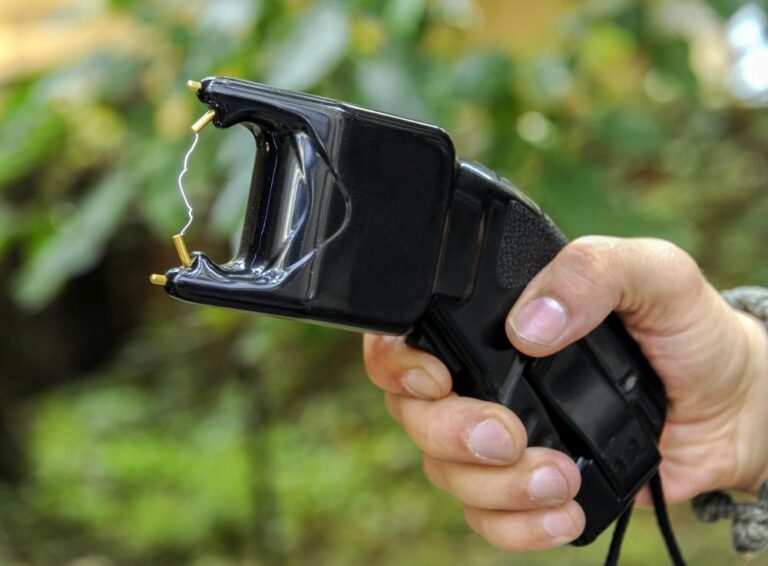Table of Contents
- Legal Precedents Impacting Stun Gun Classification Across Jurisdictions
- Judicial Interpretations Influencing Regulatory Frameworks for Non-Lethal Weapons
- Case Studies on the Enforcement and Challenges in Stun Gun Legislation
- Recommendations for Policymakers on Balancing Public Safety and Self-Defense Rights
- Concluding Remarks
Legal Precedents Impacting Stun Gun Classification Across Jurisdictions
Legal interpretations surrounding stun guns have varied widely, with landmark cases establishing pivotal guidelines that courts across states often reference. For example, several rulings have distinguished stun guns from traditional firearms, thereby influencing how legislation frames their possession and use. These cases highlight criteria such as the intent behind carrying a stun gun, its potential for lethality, and the contextual application of self-defense laws. Jurisdictions that have ruled stun guns as less-lethal weapons promote a more lenient regulatory environment, whereas others treat them akin to firearms subject to stricter controls.
Examining recent court decisions reveals a trend toward nuanced differentiation based on technological advancements and public safety concerns. Key decisions emphasize:
- Contextual interpretation: Understanding the circumstances of possession and use, affecting legality.
- Classification fluidity: Recognition that stun guns may not fit neatly into existing weapon categories, prompting calls for updated legal frameworks.
- Precedent influence: Earlier rulings shaping subsequent jurisdictional laws, evident in evolving statutes and enforcement policies.
Judicial Interpretations Influencing Regulatory Frameworks for Non-Lethal Weapons
The evolving landscape of non-lethal weapons, particularly stun guns, has been significantly shaped by key judicial decisions that reinterpret existing laws within modern contexts. Courts have played a critical role in delineating the boundaries between permissible self-defense tools and prohibited weaponry. Through these rulings, legal definitions have adapted to technological advancements, thereby influencing how regulatory bodies classify and control stun guns. Notably, cases have highlighted the importance of considering intent, operational mechanism, and potential harm when assessing a non-lethal weapon’s legal status.
Several emerging themes have influenced regulatory frameworks, emphasizing:
- Proportionality: Ensuring weapons are regulated in alignment with their capacity to cause harm relative to self-defense necessities.
- Technological Specificity: Differentiating between various stun gun models based on voltage output and usage restrictions.
- Constitutional Rights: Balancing public safety concerns with individuals’ rights to bear arms for personal protection.
These judicial interpretations not only impact legislative drafting but also guide law enforcement and judicial authorities in uniformly applying regulations, fostering a legal environment where public safety and civil liberties coexist more coherently.
Case Studies on the Enforcement and Challenges in Stun Gun Legislation
Across multiple jurisdictions, enforcement agencies face significant hurdles when regulating stun guns due to discrepancies in legislative definitions and inconsistent application of laws. A notable example emerged in California, where courts grappled with differentiating stun guns from other less-lethal weapons under the Penal Code. This tension has led to cases where defendants contested charges on grounds of ambiguous weapon classification, ultimately prompting legislative bodies to revisit and refine statutory language to better capture the nuances of emerging self-defense devices. Such cases underscore the dynamic legal landscape where judicial interpretation directly influences enforcement priorities and public safety directives.
Several challenges have surfaced repeatedly, highlighting the complex interplay between technology evolution and legal oversight. Key issues include:
- Variability in state-level statutes: Inconsistent definitions and varying restrictions complicate cross-border enforcement and create legal gray areas.
- Proving intent and use: Courts often struggle to determine whether stun guns are possessed for lawful self-defense or underlying criminal intent, impacting verdicts and penalties.
- Technological advancements: Newer stun devices with modified functionalities challenge existing classification frameworks, requiring continuous legislative updates.
These case-driven insights not only inform policy reform but also emphasize the critical need for clearer, uniform standards to facilitate effective governance and safeguard civil liberties.
Recommendations for Policymakers on Balancing Public Safety and Self-Defense Rights
Policymakers must navigate the often competing priorities of ensuring public safety while respecting individual rights to self-defense. To achieve this delicate balance, laws should be crafted with clear definitions of what constitutes non-lethal defensive weapons, such as stun guns, distinguishing them from firearms while maintaining stringent regulations to prevent misuse. Establishing uniform licensing and training requirements can promote responsible ownership, ensuring that users are knowledgeable about safe handling and legal boundaries, thus reducing accidental harm or escalation during confrontations.
In fostering a policy environment that supports both safety and autonomy, lawmakers should consider the following approaches:
- Enhanced background checks: Screening for history of violence or mental health concerns before authorization.
- Clear public education campaigns: Informing citizens about legal rights and restrictions surrounding self-defense tools.
- Periodic review mechanisms: Adjusting laws based on emerging data, case law, and technology advances.
- Collaboration with law enforcement: To ensure consistent enforcement and integration of non-lethal weapon policies.
Concluding Remarks
As legal battles surrounding stun guns continue to unfold, their outcomes play a pivotal role in defining how these devices are categorized and regulated across jurisdictions. The evolving judicial interpretations not only influence law enforcement protocols but also impact public accessibility and safety measures. Monitoring these cases remains essential for policymakers, legal professionals, and consumers alike, as the classification of stun guns will shape the future landscape of non-lethal weapon regulation.Check Our Other Blogs
- StunGun – Your Trusted Source for Stun Guns, Laws, and Self-Defense Tips
- PepperSprayLaws – Your Trusted Resource for Pepper Spray Information
- StunGunLaws – Your Trusted Guide to Stun Gun Legality and Safety





